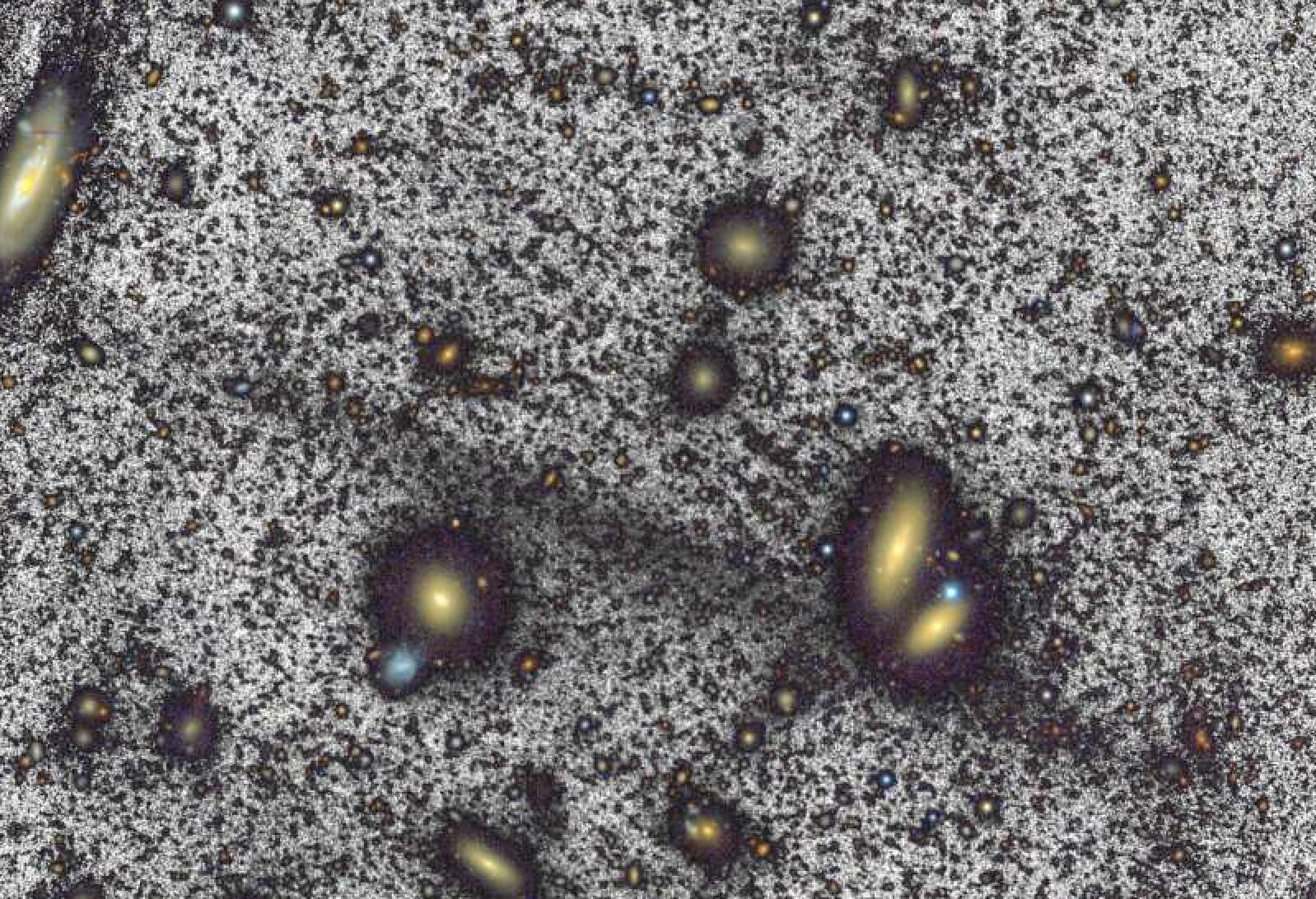Surprisingly, a team of international researchers has stumbled upon a colossal and exceptionally dim stream of stars situated amidst galaxies.
 The black streak is the newly discovered Giant Coma Stream. This line is ten times as long as the Milky Way and is located about 300 million light years away between galaxies (the yellow spots). Image Credit: William Herschel Telescope/Román et al.
The black streak is the newly discovered Giant Coma Stream. This line is ten times as long as the Milky Way and is located about 300 million light years away between galaxies (the yellow spots). Image Credit: William Herschel Telescope/Román et al.
While streams within the Milky Way galaxy and neighboring galaxies are already documented, this marks the inaugural observation of a stream spanning between galaxies. Remarkably, it stands as the most extensive stream identified thus far. The astronomers have detailed their findings in the Astronomy & Astrophysics journal.
Initial observations were conducted using the relatively modest 70-cm telescope owned by astronomer Michael Rich in California, USA. Subsequently, the researchers directed the 4.2-m William Herschel telescope located in La Palma, Spain, toward the designated area.
Following thorough image processing, they unveiled an extraordinarily faint stream surpassing the length of the Milky Way by over tenfold. Positioned seemingly unattached to any specific galaxy, this expansive stream hovers within the cluster environment. The researchers have coined it the “Giant Coma Stream.”
This giant stream crossed our path by coincidence. We were studying halos of stars located around large galaxies.
Javier Román, Study Lead Researcher, University of Groningen
He maintains affiliations with both the University of Groningen in the Netherlands and the University of La Laguna in Tenerife, Spain. The significance of the Giant Coma Stream's discovery lies in its fragility, existing within a challenging environment characterized by galaxies that are mutually attracting and repelling each other.
Meanwhile, we have been able to simulate such huge flows in the computer. We therefore expect to find more of them. For example, if we search with the future 39-m ELT and when Euclid starts producing data.
Reynier Peletier, Study Co-Author, University of Groningen
Using upcoming large telescopes, the researchers aim not only to uncover additional giant streams but also to closely examine the Giant Coma Stream itself.
We would love to observe individual stars in and near the stream and learn more about dark matter.
Reynier Peletier, Study Co-Author, University of Groningen
The Coma Cluster stands as one of the extensively researched clusters of galaxies, harboring thousands of galaxies approximately 300 million light-years away from Earth, situated in the northern constellation Coma Berenices.
In 1933, Swiss astronomer Fritz Zwicky demonstrated that the galaxies within the cluster exhibited velocities that were too high when considering only the visible matter. He deduced the presence of dark matter, serving as an unseen force maintaining cohesion. The precise characteristics of dark matter remain unidentified to this day.